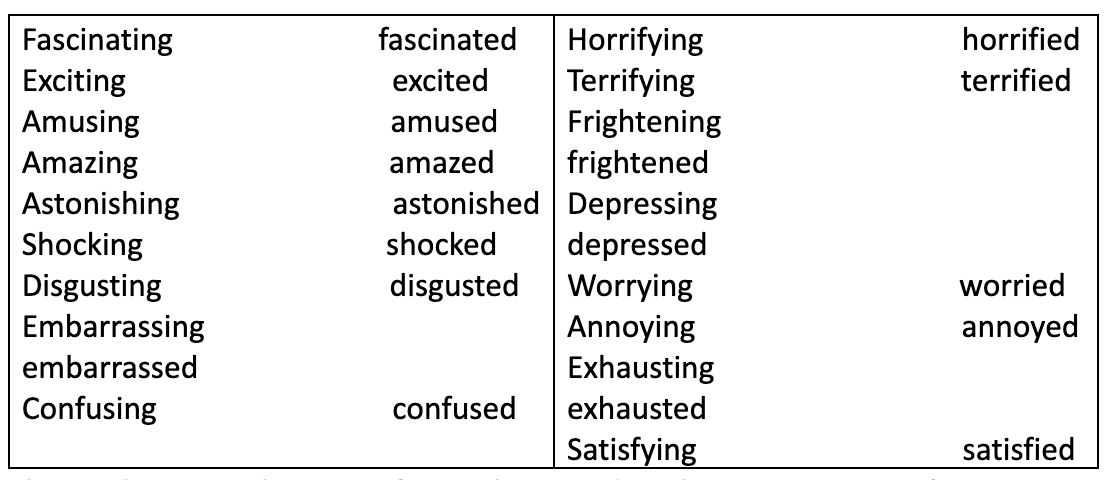J’utilise correctement les adjectifs
- King James is a strong basketball player.
- It is said that reading is important.
Strong and important are adjectives. An adjective describes or qualifies a noun or tells us more about it.
Adjectives are often placed before a noun or after a linking verb (ex: be, seem, look, etc...)
Example: He is a nice boy.
The man we met seems intelligent.
There are many pairs of adjectives ending in –ing and –ed.
Ex: English is interesting that’s why students are interested in it.
Someone is –ed if something is –ing. Or if something is –ing, it makes someone –ed.
Ex: The boy is excited because the film is fascinating.
The film is fascinating that’s why the boy is excited.
Football is amusing.
My friend seems worried about his studies.
Common pairs of adverbs ending in –ing and –ed:

Short adjectives change in form when used in the comparative of superiority or superlative.
Example: He is older than the other boys.
It is the largest city I have ever visited.
These kids are happier than the other.
The quicker, the better.



